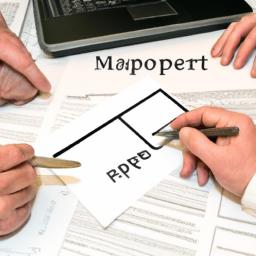ERP MRP Software: Revolutionizing Business Operations
In today’s fast-paced and competitive business landscape, staying ahead of the curve is crucial to success. As businesses strive for efficiency, accuracy, and streamlined operations, the implementation of erp mrp software has become increasingly vital. In this article, we will explore the significance of ERP MRP software, its definition and overview, as well as the multitude of benefits it offers to businesses like yours.
A. Importance of ERP MRP software in business operations
Imagine a well-oiled machine where every part seamlessly works together, ensuring smooth operations and maximum productivity. This is precisely what ERP MRP software brings to the table. ERP (Enterprise Resource Planning) and MRP (Material Requirements Planning) software solutions are designed to integrate various business functions, such as finance, sales, inventory management, and production, into a centralized system. By providing a holistic view of your organization, ERP MRP software empowers you to make informed decisions, streamline processes, and optimize resource allocation.
B. Definition and overview of ERP MRP software
ERP MRP software acts as a digital backbone, connecting different departments and facilitating efficient data flow. It enables real-time visibility into inventory levels, production schedules, sales orders, and financial transactions. By automating manual tasks and eliminating silos, ERP MRP software minimizes errors, reduces costs, and enhances overall productivity. From small businesses to large enterprises, organizations across industries can benefit from the comprehensive capabilities offered by ERP MRP software.
C. Benefits of implementing ERP MRP software
-
Enhanced Efficiency: ERP MRP software eliminates redundant tasks, automates processes, and streamlines operations, allowing your team to focus on value-adding activities. By reducing manual errors and improving data accuracy, you can optimize resource utilization and avoid costly inefficiencies.
-
Improved Decision Making: With real-time access to accurate data and advanced analytics capabilities, ERP MRP software empowers you to make data-driven decisions. Whether it’s forecasting demand, identifying bottlenecks, or optimizing inventory levels, the insights provided by ERP MRP software enable you to stay proactive and agile in a dynamic business environment.
-
Seamless Collaboration: ERP MRP software breaks down silos by integrating departments and facilitating effective communication. From sales and procurement to production and finance, everyone can access relevant information, fostering collaboration and ensuring alignment across the organization.
In the next section, we will delve deeper into the key features and functionalities of ERP MRP software, shedding light on how it revolutionizes business processes and integrates with other systems and modules. So, stay tuned to explore the exciting world of ERP MRP software and unlock the full potential of your business operations.
Choosing the Right ERP MRP Software
In the vast landscape of ERP MRP software, selecting the right solution for your business can be a daunting task. With so many options available, it’s crucial to consider various factors to ensure a successful implementation. In this section, we will explore the key factors to consider when choosing ERP MRP software, evaluating scalability and customization options, and comparing different vendors.
A. Factors to consider when selecting ERP MRP software
-
Industry-Specific Requirements: Different industries have unique operational needs. Consider whether the ERP MRP software caters to your specific industry requirements, such as manufacturing processes, supply chain management, or financial regulations.
-
Scalability and Flexibility: As your business grows, it’s essential to choose ERP MRP software that can scale with your evolving needs. Ensure that the software offers flexibility to accommodate future expansions, additional users, and changing business processes.
-
Integration Capabilities: Seamless integration with other systems and modules is crucial for optimizing data flow and avoiding data silos. Confirm that the ERP MRP software can integrate with your existing systems, such as CRM, e-commerce platforms, or warehouse management systems.
B. Evaluating scalability and customization options
-
Scalability: Assess the software’s ability to handle an increasing volume of data and transactions. Consider its performance under heavy loads and whether it can accommodate a growing user base without compromising system reliability or response times.
-
Customization: Determine the level of customization offered by the ERP MRP software. Can it be tailored to suit your unique business processes, workflows, and reporting requirements? Having the flexibility to customize the software ensures it aligns perfectly with your organization’s needs.
C. Comparing different ERP MRP software vendors
-
Research and Evaluate: Conduct thorough research on different ERP MRP software vendors. Consider factors such as reputation, customer reviews, industry expertise, and the longevity of the vendor in the market. Look for vendors who have a track record of successful implementations in businesses similar to yours.
-
Request Demos and Trials: Narrow down your options and request demos or trials from shortlisted vendors. This will allow you to experience the software firsthand and assess its ease of use, user interface, and overall functionality.
By carefully considering these factors, evaluating scalability and customization options, and comparing different ERP MRP software vendors, you can make an informed decision that aligns with your business requirements. In the next section, we will discuss the crucial aspects of implementing ERP MRP software, ensuring a smooth transition and successful adoption across your organization.
Implementing ERP MRP Software
Implementing ERP MRP software is a significant undertaking that requires careful planning, thorough preparation, and effective execution. In this section, we will explore the key steps involved in successfully implementing ERP MRP software, including planning and preparation, training employees and stakeholders, and overcoming common implementation challenges.
A. Planning and preparation for ERP MRP software implementation
Implementing ERP MRP software starts with a well-defined plan and thorough preparation. Here are some crucial steps to consider:
-
Define your objectives: Clearly outline the goals and objectives you aim to achieve through the implementation of ERP MRP software. Whether it’s improving efficiency, reducing costs, or enhancing customer satisfaction, having a clear vision will guide your implementation strategy.
-
Assess your current processes: Evaluate your existing business processes and identify areas that need improvement. This analysis will help you tailor the ERP MRP software to meet your specific needs and ensure a seamless transition.
-
Select the right software vendor: Research and choose a reputable ERP MRP software vendor that aligns with your business requirements and offers the necessary features and functionalities. Consider factors such as scalability, customization options, and ongoing support.
-
Create an implementation roadmap: Develop a comprehensive implementation plan that outlines the timeline, milestones, and responsibilities. This roadmap will provide a clear roadmap for the implementation process and help manage expectations.
B. Training employees and stakeholders
Successful ERP MRP software implementation relies on the knowledge and understanding of your employees and stakeholders. Consider the following training strategies:
-
Provide comprehensive training: Conduct training sessions to familiarize employees with the ERP MRP software. Cover the functionalities, workflows, and best practices to ensure that they can effectively utilize the software for their respective roles.
-
Offer ongoing support: Provide continuous support and resources to address any questions or concerns that may arise during and after the implementation process. This support will help employees adapt to the new system and maximize its potential.
-
Promote stakeholder engagement: Involve key stakeholders throughout the implementation process to gain their support and input. Their involvement will ensure the software meets the needs of the entire organization.
C. Overcoming common challenges during implementation
Implementing ERP MRP software may come with its fair share of challenges. Here are some common hurdles and strategies to overcome them:
-
Resistance to change: Anticipate resistance from employees who are accustomed to existing processes. Communicate the benefits of the new system, address concerns, and provide ongoing support to ease the transition.
-
Data migration: Migrating existing data to the new system can be compleEnsure data integrity, conduct thorough testing, and have a backup plan in case of any issues during the migration process.
-
Project management: Effective project management is crucial to keep the implementation on track. Assign a dedicated project manager, establish regular communication channels, and monitor progress against the implementation roadmap.
By following these implementation strategies and addressing common challenges, you can ensure a smooth and successful transition to ERP MRP software. In the next section, we will discuss how you can optimize ERP MRP software for maximum efficiency and tailor it to meet your specific business needs. Stay tuned!
Optimizing ERP MRP Software for Maximum Efficiency
In order to harness the full potential of ERP MRP software, businesses must go beyond its implementation and delve into the realm of optimization. By customizing the software, integrating data from various departments, and utilizing its analytics and reporting capabilities, you can elevate your operations to new heights of efficiency.
A. Customizing ERP MRP software to meet specific business needs
Every business is unique, with its own set of requirements and processes. Generic ERP MRP software may not fully align with your organization’s specific needs. However, one of the key advantages of modern ERP MRP solutions is their flexibility and customization options. Take advantage of this by tailoring the software to your business. Customize workflows, reports, and dashboards to match your operational requirements. By adapting the software to fit your business processes, you can streamline operations and improve productivity.
B. Integrating data from various departments
In today’s interconnected business environment, data flows from multiple sources and departments. Unlocking the true potential of ERP MRP software requires seamless integration of this data. By integrating data from various departments like sales, inventory, production, and finance, you can gain a holistic view of your operations. This not only improves visibility but also enables you to make data-driven decisions based on real-time information. Integrating data ensures accuracy, reduces manual errors, and promotes collaboration across the organization.
C. Utilizing analytics and reporting capabilities
ERP MRP software is equipped with powerful analytics and reporting capabilities that provide valuable insights into your business performance. By leveraging these tools, you can monitor key performance indicators (KPIs), identify trends, and make informed decisions. Analyze production efficiency, sales forecasts, inventory turnover, and financial metrics. With comprehensive reporting, you can spot bottlenecks, optimize processes, and identify areas for improvement. By harnessing the power of analytics, you can drive continuous improvement and stay ahead of the competition.
In the upcoming section, we will explore the process of choosing the right ERP MRP software. We will discuss the factors to consider, scalability and customization options, as well as how to compare different vendors. So, keep reading to ensure you make an informed decision for your business.



